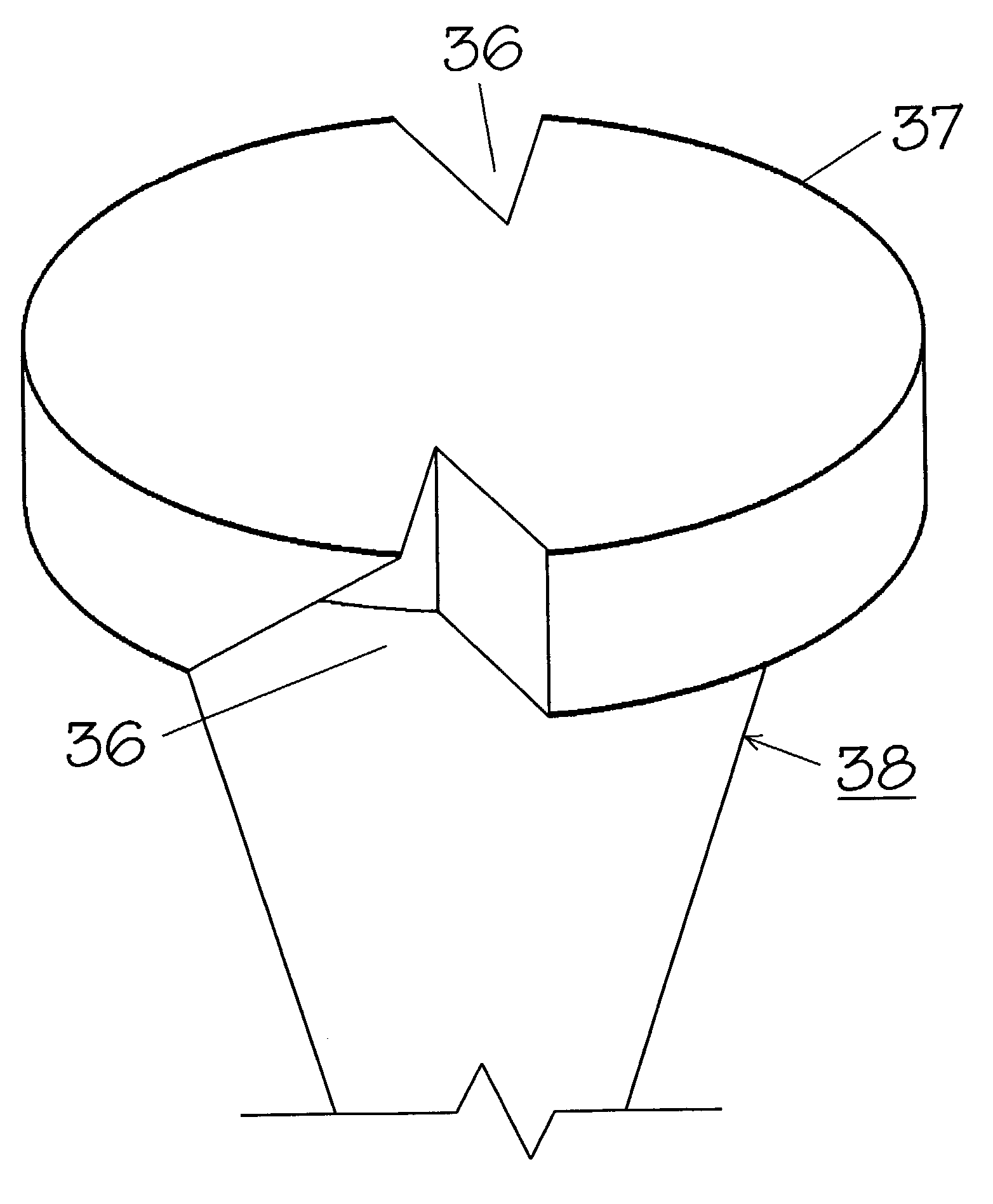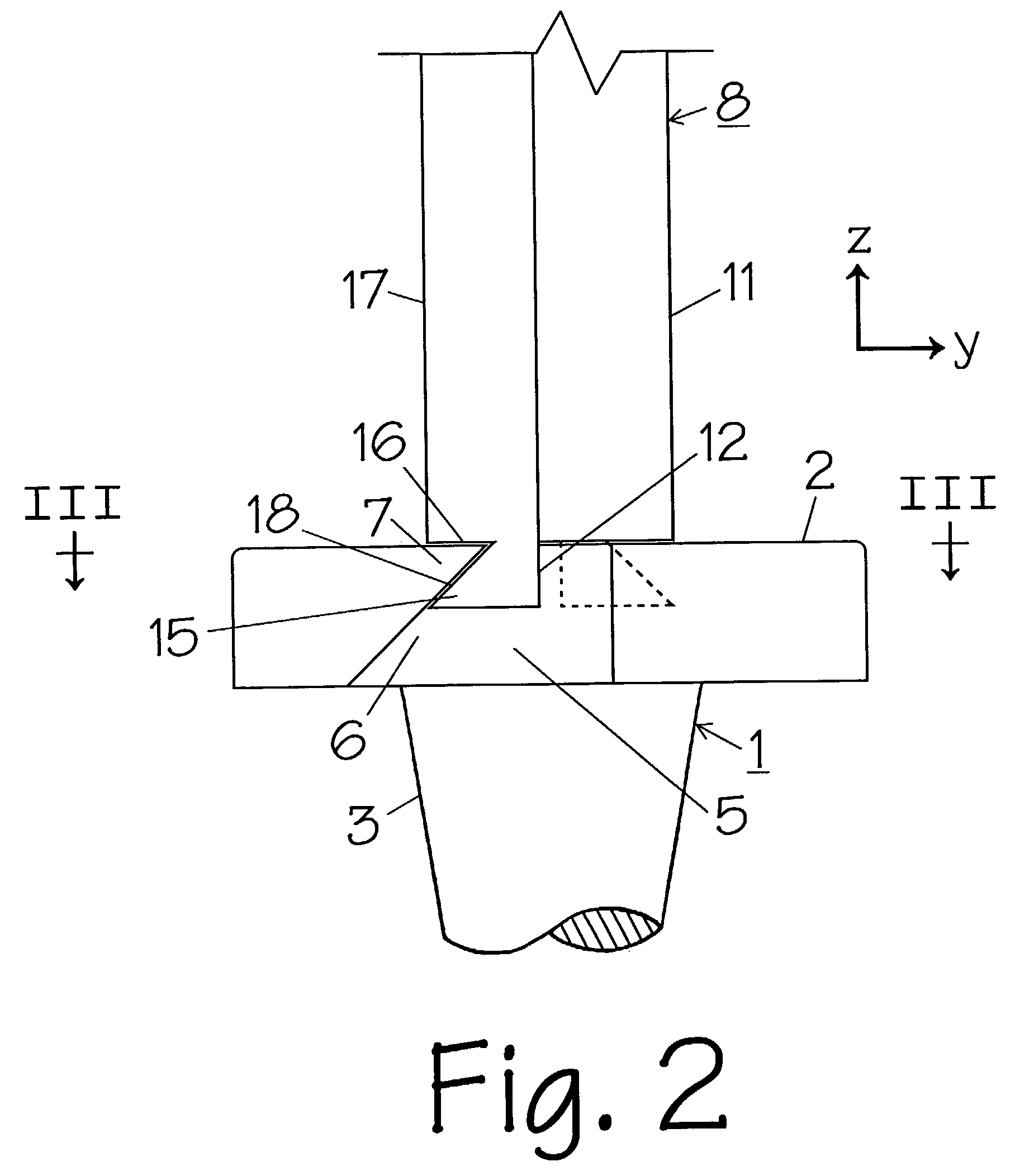Undercut screw and matching bit
a screw and screw technology, applied in the direction of screwdrivers, wrenches, fastening means, etc., can solve the problems of difficult to stop the driver, difficult to remove the screw, and destroying the bit, and achieve the effect of convenient operation
- Summary
- Abstract
- Description
- Claims
- Application Information
AI Technical Summary
Benefits of technology
Problems solved by technology
Method used
Image
Examples
Embodiment Construction
[0020]In FIGS. 1, 2, 3, and 4, pan head screw 1 has a head 2 and threaded shaft 3 and is centered on longitudinal axis 4. At the periphery of a diameter of head 2 are two slots 5, which extend completely through head 2 of screw 1. By positioning dies in the shape of slots 5 around a wire blank, screw 1 can be made by cold heading. Slots 5 may have a variety of shapes and dimensions appropriate for the type of screw to be used. A slot bound on three sides by the head of the screw (as in FIG. 1) may have a width (tangential direction) of about 1 / 32 to about ¼ inches. (A “tangential” direction is a direction approximately tangent to the periphery of the head of the screw, i.e., a direction that will turn the screw clockwise or counterclockwise.) Each slot 5 has an undercut portion 6 on one side, the side to which clockwise torque is applied to head 1. The undercut portions 6 form wedges 7; the peak of each wedge points in a counterclockwise direction. (If a counterclockwise torque is t...
PUM
 Login to View More
Login to View More Abstract
Description
Claims
Application Information
 Login to View More
Login to View More - R&D
- Intellectual Property
- Life Sciences
- Materials
- Tech Scout
- Unparalleled Data Quality
- Higher Quality Content
- 60% Fewer Hallucinations
Browse by: Latest US Patents, China's latest patents, Technical Efficacy Thesaurus, Application Domain, Technology Topic, Popular Technical Reports.
© 2025 PatSnap. All rights reserved.Legal|Privacy policy|Modern Slavery Act Transparency Statement|Sitemap|About US| Contact US: help@patsnap.com



